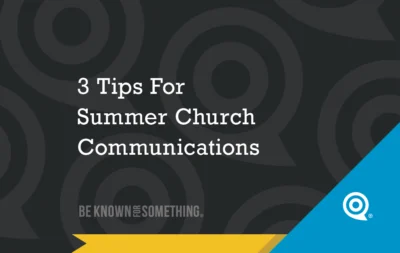
Church SEO: Branding Terms Defined
Everyone likes to be found: that’s why Church SEO is important. Especially being found on Google (or Yahoo, Bing, etc.)

Content is everywhere! In fact, there’s more content pushed to us than we can possibly consume. That content noise is forcing many to ignore and skim. And if you have a poor track record of bad content, your congregation will be even more apt to skip it.
That’s when you, as a church communicator hears “I wasn’t aware of that”. Even after pushing the content in an email, the worship guide, the announcement slides, in a social media post, and listed in your online church calendar. There has to be a better way that’s not quite so exhausting.
Here are 6 questions to ask yourself when evaluating church content before communicating it:


Everyone likes to be found: that’s why Church SEO is important. Especially being found on Google (or Yahoo, Bing, etc.)

When I’ve taught Sunday School classes, I’m always amazed how attendance fluctuated very little each week yet we had different

Church Rebranding, it’s all the rage. And it’s a great trend. In fact, if you haven’t branded or rebranded in
Discover your thread®. Be Known for Something® relevant and needed. Pastor, control your church brand and be heard again.
– Discover Your Audience
– Build Your Brand
– Communicate & Be Heard
Communicate so your congregation & community pays attention to your website, social media, & email!
We'll never spam you. Unsubscribe anytime.
